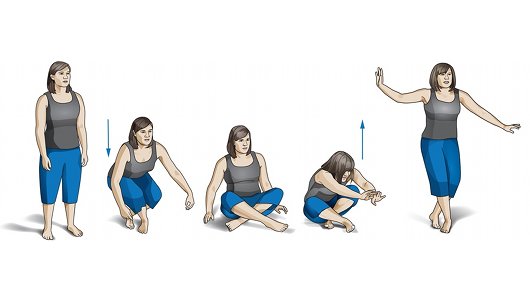When you age, a whole cavalcade of biologically and behavioral based things happen that can make you stubbornly hold on to fat. If you want to be svelte, you need to tackle fat with some smart and consistent actions, which I outline in this post, “Baby Boomer’s Guide to Trimming Body Fat”.
![Body Fat Percentages of Male and Women Celebrities]() (Click to Enlarge)
(Click to Enlarge)
Note: This is article 4, part 3 to my FREE four-part series about how to build a strong and youthful body.
I’VE NEVER been very overweight, but from time to time, I’ve been softer than I’d like, perhaps 15 pounds or so away from a decently muscular and trim visage.
Many of my peers are quite stout, or skinnyfat (thin, but still having a high percent body fat). They consider me fit. Part of the reason for that is that I got immersed in health stuff early in life, and did not do some of the typical things that can add stress and absorb time, such as get married, have kids and work for 30 years without a break.
You know, the usual stuff.
If you’re married and have children, you know that I’ve missed out on some amazing experiences and feelings, but the silver lining is that I’ve had more time to devote to self-experimentation than most.
The upside is that now well into my fifth decade, my body has transcended its age – at least at the moment.
What I mean is that my biology does not = my chronology.
Part of the reason is diet: food, drink and supplements that all help with trimming body fat.
I could wax and wane till you’re bored silly about diet stuff, but instead I’d like to drill down to something both tangible and implementable. (Yes, it’s a word, even if an awkward one.)
This post delves into the weekly rhythms of my fat-loss focused dietary life, with the aim of giving you some ideas to carry out yourself.
As you’ll see, I don’t enumerate much about specific foods, but rather underscore specific principles.
After they’re laid out, I’ll turn to how these principles are applied in my weekly dietary regimen, and then offer a quick summary.
So, this post is organized thus:
· The Seven Principles for Trimming Body Fat
· My Weekly Dietary Regimen
· Summary
This is a long post, so I’ll be kind and suggest to those of you with little interest in this, or little time to devote to it, scroll down to the bottom Summary. If that tweaks your interest, you can always read more.
MY SEVEN PRINCIPLES FOR TRIMMING BODY FAT
I’ve chosen these seven principles because they are fairly hot topics on the Web and blogosphere, sometimes fiercely debated. So, here I’m adding my two cents, as well as what my experience suggests is worth exploring.
#1. Carbs Are Bad
Carbohydrates from grains, particularly high glycemic carbs, impair the appropriate insulin/blood sugar/leptin response and thereby have a tendency to make you fat unless you exercise a lot, such as doing long bouts of cardio.
I underscore “cardio” (exercises that tax your cardiovascular system) because you need to ingest carbs to fuel you for, say, an hour of cardio exertion, but you typically don’t for anaerobic exercises.
If you have any doubt about this, check out my post, What’s Making Us Fat and Sick, which starts out like this:
![Sugar is Evil]()
(The above link will also bring you to a discourse on high glycemic carbs and how insulin resistance begins the malevolent cycle of turning high glycemic carbs into body fat.)
Perhaps you’ve heard of “slow carbs“, a term that self-experimenter, Tim Ferriss popularized, or the more commonly used term, “complex carbs”. They — as do “low glycemic carbs” — refer to carbohydrates that digest slowly and do not cause glucose and insulin levels to surge in response to eating them.
If you want to eat carbs, stick to those that are slow. A good rule of thumb is to avoid carb foods that are white (pasta, bread, rice) and live in boxes (various processed food and cereals).
Over time, a diet devoted to fast carbs will desensitize insulin, making it resistant in its response to ingested carbohydrates, which eventually can cause diabesity, a term popularized by Dr. Mark Hyman that refers to the unhappy combination of diabetes and obesity.
I primarily eat carbs after workouts, and mainly they’re of the slow variety.
#2. Fat Is OK
Eating fat is less apt to make you fat than eating carbs, assuming about the same level of calories consumed. In fact, fat has had a resurrection in popularity of late, given that recent studies challenge the long-standing assertion that one particular type of fat — saturated fat — is not the evil cardiovascular-impairing fat it once was thought to be.
That said, your aim is not to be unmindful of your consumption of saturated fat; rather to make sure that the butter or meat or coconut oil you eat were, or were derived from, no-hormone, grass-fed critters in the case of the first two, and organic/cold pressed in the case of the third.
What remains unchallenged is that trans fat (found in processed foods) is bad, and omega-3 fatty acids are good, so focus on eliminating one and increasing the other. Foods rich in omega-3 fats include avocados, sardines, salmon, fish oil, flax seeds, chia seeds, hemp seeds, walnuts, Brazil nuts and the like.
The omega-6 fats from olive oil are fine, but the balance between them and omega-3s are important. Since most of us get far more 6s than 3s, given the prevalence of olive oil over, say, fish oil, this balance is out of whack for most people. So, again, focus on ingesting more omega-3s.
#3 Coffee is OK
But there are conditions.
As Dave Asprey over there at the Bulletproof Executive will tell you as he describes his Bulletproof Coffee, it must be organic, grown at high altitude, air-dried and contain no mytoxins. (For more about this, go here and scroll down to “Dave Asprey”.)
Another condition is the amount you drink. Caffeine may be a beneficial stimulant, but it also raises cortisol levels, which has a negative cascading effect on your health.
Although cortisol is essential to enable our bodies to support stability and balance during acute periods of stress (short bouts of fear, physical trauma, physical exertion), excessive amounts of cortisol can destroy the immune system, shrink the brain and other vital organs, decrease muscle mass, increase inflammation throughout the body, and cause thinning of the skin.
As Dr. Nicholas Perricone puts it:
“In the anti-aging field, cortisol is known as the death hormone because it is associated with old age and disease” (Source)
If you drink one cup in the morning and leave it at that, the benefits of good coffee (as above described) may out weigh the benefits (read this debate), but if you ingest more than one cup, do something to mitigate its pernicious effects, such as taking systemic stress reducing adaptogens like Rhodiola Extract![]() and Ashwagandha Root Extract
and Ashwagandha Root Extract![]() .
.
If you sweat or feel slightly nauseous when drinking coffee, it may be a sign that you don’t digest it well. Do yourself a favor – drink tea instead.
#4. Free Range Red Meat Is OK, But Salmon Is Better
Hey, if you like meat, odds are you’re committed to it. What I’d like to do is tweak your meat-eating habit a bit by suggesting that you:
· Not eat it everyday, but mix it up with other sources of protein;
· Choose no-hormone, on-antibiotic, grass-fed meat; and
· Eat some fish, such as Alaskan salmon, Pacific herring, cod, halibut, etc.
What’s great about salmon is that it’s high in protein and omega-3 fatty acids. The protein builds muscle and the omega-3 fats help reduce stress and inflammation.
(Two posts that wade deep into the meat debate are: Is Meat Good For You? 8 Experts Chew On It, And 4 Spit It Out, and What You Need To Know About Coffee, Saturated Fat and Red Meat.)
Personally, I have to fight a tendency to consume all my protein via various powders. They’re quick to prepare and exacting in terms of quantity of protein consumed. The issue for me is that they’re processed, another example of manufactured food. That said, you can find some pretty righteously made, high-quality protein powders, but I still think that other non-powdered sources are a good idea.
It’s pretty clear that eating protein with your meals and snacks will help with satiation, so you’ll eat less overall. Not to mention muscle. Protein helps build muscle. More muscle = a higher basal metabolic rate = more fat burning.
(Read: How to Measure Your Basil Metabolic Rate, and Why It’s Important That You Do.)
#5. You Need To Disrupt Homeostasis
What I mean here is that our marvelous bodies are very smart and they know how to survive, and so if you suddenly cut your caloric intake and sustain this low-level, your body will eventually stop losing weight. It will change its basal metabolism and other systems to maintain a certain level of fat, which evolutionarily speaking, protected us from burning too many calories during famine.
In order to keep the body from adjusting its metabolism to accommodate fewer calories while stubbornly holding on to its fat, you can try to disrupt this homeostasis mechanism by consistently being inconsistent with the amount of calories you eat, and perhaps even when you eat certain macronutrients, such as carbs.
This distills down to two things that you might try:
1. Chose one day per week as a “cheat day” where you eat whatever you want; and
2. Eat most of your carbs after you exercise.
For this to work, you have to know yourself. You can’t say, “Oh I just ate a gallon of ice cream… I guess today will be my cheat day.” And then two days later, “Geez, well, that pizza sure went down nicely… today is a cheat day too!”
One cheat day per week is good for a person who can suspend their desire for gratification, knowing that each week, there will be a day designated for it. If you can’t do that, forget about this homeostasis disrupting tactic.
This also applies to designating a particular time for eating carbs. If you find that you’re eating them both before and after your workouts, obviously, this tactic is not for you.
If you don’t exercise, consider eating most of your carbs during lunch. Ayurevdic Medicine is a multiple-thousand year old Indian tradition that says that your digestion capabilities are strongest mid day and that it is then that you should eat your heaviest meal. Non-exercisers might try that.
#6. You Need To Build Muscle
This goes for you women as well.
It has nothing to do with looking like a body builder, unless that’s your thing.
The simple fact is that without some sorta resistance training, the average person can lose as much as 3 to 5% of their muscle mass per decade after age 30. This is called Sarcopenia, and you don’t want it to happen to you.
You build/maintain muscles by using them; meaning, making them resist certain forces applied to them, such as gravity.
YouTube is stuffed with “how to” exercise videos. On this very site, I show how you can apply resistance to your body without the use of weights in what I’ve called, The Homestead Workout. (Yeah it’s goofy, but you’ll get some ideas.)
#7. You Need Reset Your Hormones
If you’re younger than 40, read this anyway, because if you’re lucky, someday you’ll want to know why you’re feeling old. When that happens, this information will be handy to know.
We live in an estrogen-producing world of food and chemicals. The result is that men often have too much of it. With women, it’s more complicated, but often after menopause, many have too little estrogen and too much testosterone.
For men, too much estrogen produces similar symptoms to too little testosterone: Belly fat, listlessness, low sex drive, muscular atrophy, etc.
Naturally, women need and thrive on more estrogen than men, but too much, sometimes called “estrogen dominance” can imitate other syndromes such as metabolic syndrome, fibromyalgia, lupus, peri-menopause and anxiety. (Source.)
There’s more to hormones than testosterone and estrogen, but suffice to say here that it’s a really good idea to know your hormone numbers via a blood (preferable) or saliva test.
When I got my blood work results back, I was much surprised. (Here’s the story on that.)
You can “reset” your hormones to youthful levels by going to a doctor and getting a prescription for the bio-identical hormones you’re deficient in, or ingest certain supplements and foods, which continues to be my course of action to increase my testosterone.
Now that we’ve covered the six “principles” for losing body fat, I’ll next share with you how I apply them during any given week.
MY WEEKLY DIETARY REGIMEN, etc
You may recall that at the beginning of this post, I mentioned that I’ve never been much overweight, but to fine tune that statement, let me state that there’s some relativity embedded in that declaration.
In my twenties and thirties, I hovered between 10 and 14% body fat. In my forties and fifties, my body fat increased to the high teens, even touching on 22%. (Check out the body fat percent pictures above and see what your number might be.)
I still looked OK enough, because I also had a decent amount of muscle on my body, and – relative to my peers – was doing just fine.
Or so I thought.
Then one day a couple of years ago, my sister and I were visiting friends who have a house right on Stinson Beach, just north of San Francisco. The ocean was inviting. I went in and splashed around, one eye scanning for one of those White Sharks that harass the surfers once in a while.
When I emerged from the ocean, sis snapped a pic. Later, she showed it to me. And I said something like, “Holly hell, I’ve gotten fat!”
I appeared fatter in the picture than I thought I was, and I intended to do something about it.
It just took awhile to really get serious.
A few months back I began to seriously chipping away at the chub. I developed a pattern, a weekly pattern, which I share in the table below.
Joe’s Weekly Food and Exercise Cycle
![Joe's Weekly Diet and Exercise Cycling Schedule]()
The physical stuff enumerated in the box above has a better chance of happening as planned if I begin my day on the right foot, sorta speak.
Here’s how a typical day unfolds…
Gratitude
How you begin your day can influence the quality of your day.
I set myself up to have a great day while still in bed. As I break away from sleep and enter that hypnagogic state before full wakefulness, I:
· Silently utter a series of mantras, or affirmative statements, as I visualize them; and
· Review in my mind’s eye what I wish to accomplish this day.
Since I’m trying to lose body fat, a good part of this bed time reverie is focused on what I intend to do this day in support of that aim.
I then get up, patter to the kitchen, heat some purified water, squeeze a lemon in it, face the window that overlooks Richardson Bay, take in the glory of the sun rising over Angel Island, toast it all, and then slowly drink down the warm lemon water as I recount all for which I’m grateful.
Even if things kinds stink, there’s always something to be grateful for, and the more of them you find and focus on, the sweeter smelling will be your world.
Mobility
All the fluff fluff morning bed stuff done, I continue with my patter, this time to the living room where I do a series of mobility exercises that last for about 5 minutes, warm up my body, articulate the joints and get some blood flowing.
The esteemable Mike Mahler demonstrates some mobility exercise that I like, many of which I do every morning:
(Commercial Break: Maintaining/increasing mobility (aka full range of motion in your joints) is a key to enjoying your life as you age. Would you rather walk around humped over and staring at your shoes, or prance around like Madonna?)
Breakfast
I used to be in the camp that shouts, “You must eat breakfast!”, for a whole host of reasons that are still, I think, mainly true. But what I now understand is that breakfast can take many forms.
What’s true is that most of us will do better if we get some nutrition in our bodies in the morning to help fuel our day. However, there are different ways of going about this depending on your goals.
If you want to lose body fat, as I do, then one tactic is to prolong your fast.
“Who’s fasting?”, you ask.
Well, at the moment you wake up, you have – you’ve fasted from the moment you last ate the prior night till when you woke up, perhaps a total duration of 10 hour.
You can keep it going for a while if you want to adopt a particular method for losing fat.
Some call it “Intermittent Fasting”, and although there are several different ways to go about it, what it basically means is to select periods of time intervals when you don’t eat, or eat very little.
Conversely, another way to think of Intermittent Fasting is that you eat all your meals during a prescribed time range, say 1:00 PM to 9:00 PM, an eight hour period, leaving 16 hours of fasting.
In the recent past, I ate a decent sized breakfast, particularly since I wanted to get about 30 grams of protein in me within ½ hour of awakening.
If you’re consistently breaking down muscle tissue (catabolism) doing activities such as weight training, you need to be consuming protein (anabolism), on a regular basis, as this helps repair and grow the muscle.
Ingesting protein first thing in the morning feeds the body this important repair/building macronutrient, and helps control hunger throughout the day.
That said, besides wanting to feed my body what it needs to recover from the exercise I do, I’m also trying to lose body fat, right.
This Intermittent Fasting method I’m experimenting with requires that I extend the evening’s fasting period so that my body becomes better at using its fat storage for energy.
I try to strike the balance between ingesting enough nutrition, protein and fat (no carbs) to feed muscle and fight free radicals, inflammation, etc. –all components of aging – and keeping the calories low enough as to not yank me out of a fasting zone.
I’ve read that the calorie limit for maintaining the fasting state is 50, but I wind up ingesting more than that in the morning. By time I load up my morning protein/nutritional shake with various goodies, and then add the coconut butter I blend in my coffee — which I’ll get to in a moment — well, now that I do the math, I’ve probably taken myself out of the fasting zone.
Yeah, looks like all in, I’m eating just under 300 calories in the morning — less than a typical breakfast, but more than is required to keep me in a fasted state. The good news is that Intermittent Fasting comes in many incarnations, so experiment with it.
Morning Nutritional Shake Ingredients:
- 8 oz of pure Water
- 4 oz of Aloe Vera juice (helps absorption, digestion, etc.)
- 4 oz of either organic Coconut Water or plain organic Almond Milk
- 1/2 teaspoon concentrated Trace Minerals
- 2 tbls Chlorophyll (binds to and helps purge heavy metals)
- 1 tbls of grounded organic Flax Seed (omega-3 and fiber), or Chia Seeds or grounded Hemp Seeds (omega-3 and fiber)
- 1 teaspoon Pine Bark Extract (reduces inflammation, boost kidney function, etc.)
- ¼ teaspoon of Hyaluronic Acid (helpful for joint health)
- 1/4 teaspoon of Cinnamon (regulates blood sugar, etc.)
- 1 teaspoon of Turmeric (reduces inflammation)
- 1/4 teaspoon of Black Pepper (makes the tumeric bioavailable)
- 1 heaping tbls of Spirulina powder (extremely nutritionally dense)
- Scoop of Raw Protein powder (18 grams protein)
- Scoop of Whey protein powder (9 grams of protein)
(Product links for some of this is at the bottom.)
Note: Start out with just two ounces of aloe vera juice, and 1/4 teaspoon of pine bark extract and see how it affects you. I supplement with Curcumin concentrate in capsule form, but the Turmeric spice (which has Curcumin) is thought to be more bioavailable, says Dr. Weil.
These ingredients get some pretty powerful “superfoods” in me that are filled with antioxidants, omega-3 fatty acids, protein and fiber.
I admit that if this is all I ate in the morning, I’d be hungry well before my next meal, but there’s one more thing I do which has less to do about nutrition and more to do about stoking the fat burning process of the body and sustaining energy without hunger till the afternoon.
I’m referring to coffee with coconut oil blended with it, a simplified, and not fully conforming version of already-mentioned Dave Asprey’s Bulletproof coffee.
Dave’s BP coffee has the righteous coffee described above + MCT oil (a concentrated form of coconut oil) plus grass-fed butter, blended into a froth of delicious smelling stuff.
Why drink your coffee this way?
The idea is that the MCT or coconut oil and butter in the coffee will keep you alert and energized well into the afternoon, particularly if you have more than one cup, which I would be careful about, as mentioned, due to how it raises cortisol.
I amend the BP coffee formula by skipping the butter and using coconut oil rather than MCT oil that, by the way, stands for “Medium Chain Triglyceride”, which is what coconut oil is, even though it’s a saturated fat, and saturated fats typically contain long chain fatty acids.
Armed with my Morning Shake and my version of BP coffee, I keep my overnight fast going, more or less, until about 1:00 when I have my first meal.
Before we head to lunch, one more point about a liquid breakfast:
If I wasn’t on a program to lose body fat, I might still opt to skip the typical breakfast in favor of liquids, but rather than the shake described, I’d add two handfuls or kale and/or spinach, and a cup of blue and/or blackberries, and blend it all up. I’d also add more than one of the three omega-3 seeds mentioned (flax, hemp, chia) and eat a few Brazil nuts.
Yes, this added stuff would bump up the calorie count, but in this case, I wouldn’t be trying to maintain a fasting state, which we just learned above that I’m probably not doing anyway, given those nearly 300 morning calories that find their way down my gullet.
Lunch
Lunch can be anything as long is the ingredients are high quality, there’s at least 20 grams of protein in it, and the carbs are from vegetable sources.
On exercise days, as well as freshly made veggie juice, or a salad, I’ll allow a piece of high fiber fruit, such as an apple, as the fiber slows down the blood glucose uptake.
(Watch: Juicing so Simple, A Child Could Do it. And Does.)
The fat sources for lunch come typically from organic, cold press olive oil, nuts or half of an avocado.
The protein can consist of any number of protein powders (hemp, raw sprout, pea or whey), left-overs (chicken, fish, or lentils) or eggs.
So, for instance, when at home, lunch is often two whole eggs, two egg whites, zucchini, red onion, perhaps sliced mushrooms too. No bread, unless except it’s a workout day, and then it’s one slice of densely seeded whole grain bread, like Trader Joe’s European Bread.
When out and about, I have to be discerning. Yesterday, I was in San Francisco during lunchtime. The options for food where overwhelming, most of them containing way too many carbs in the form of grains or grain byproducts.
I found a place that offered the option to mix three different salads together, and I choose the lentil salad + the homemade cole slaw salad + the vegetable salad. Although lentils are a great source of vegetable protein, this meal was a bit protein-light. If I had been better prepared, I could have brought along a thermos of whey, or raw sprout protein powder mixed with water, or almond milk.
Snack
If I snack between lunch and dinner, I want the quality high, so I’ll refrain from food-in-the-box crap, and go for any assortment of odd stuff, such as:
- A cup of organic yoghurt mixed with a scoop of whey protein powder
- A few celery stalks laden with almond butter
- A couple mouthfuls of sunflower seeds
- An apple, sliced, again with almond butter
- A high quality food bar, like Raw Organics
- A cup of left-over lentils and a few tbls of Greek Yogurt
You get the snack idea: protein + something else, not carbs from grains.
Dinner
Dinner is any high quality protein source, mostly fish or vegetable based, like high-protein lentils + a bunch of steamed and raw veggies and/or steamed or baked sweet potatoes + avocado, feta cheese or nuts as typical fat sources.
Except for workout days.
On workout days, I allow myself some carbs with dinner, although they’re usually high quality, low glycemic carbs.
I rarely eat pasta, but if I did, it would be after a workout and it would be whole wheat pasta, not white.
The idea behind eating most of the carbs on workout days after the workout is that carbs, in effect, transport protein to the muscle, a concept called “carb backloading” and honed into a fine science by a guy named Kiefer. (Check out his site.)
Workout Nutrition
I typically workout in the late afternoon before dinner. Before and after the workout, I have a shake, the ingredients of which are determined by the workout.
Aerobic workouts
If it’s going to be over an hour and include a lot of aerobic activity, it’s useful to ingest carbs so that my muscles have enough glycogen in them so as not to bonk mid way through the exercise session.
In this case, an hour before the exercise I may eat a cup of oatmeal with 10 grams of protein alongside, or mixed in it. Or, if ill prepared, I may eat half a banana and/or a couple of dates just prior to the workout.
After an aerobic workout, I’ll drink a lot of water and wait for dinner to get my post-exercise nutrition, which, as mentioned will include carbs, which are minimized, if eaten at all, in non-workout dinner days.
Anaerobic workouts
These are either resistance training with body weight or weights (dumb bells, barbells, kettle bells) and/or high intensity interval training.
Because I put much more intensity into my anaerobic workouts than the aerobic ones, and given that they also break down muscle tissue far more substantially, I’m more careful about how I prepare and recover from them.
Typically, I prepare a shake and drink half of it about ½ to one hour before anaerobic exercising, consisting of:
- 16 oz pure Water
- 5 grams of BCCA powder (Branch Chain Amino Acids)
I drink the rest of it during the workout.
I haven’t done so lately, but adding Creatine to the mix is a good idea. It’s about the most studied muscle-building supplement and has a good reputation. The reasons include improving workout intensity, recovery and methylation. (Source.)
After an anaerobic workout, the muscles need feeding. Even if dinner is just an hour away, with a half hour after the exercise I’ll be drinking a post-exercise drink, which then has the added beneficial effect of reducing my appetite for dinner.
Post-Anaerobic Exercise Blended Smoothie
- 12 oz pure Water
- 4 oz Almond or Coconut milk
- 4 oz of Promegrande or Cherry juice
- 2 tbls of Fish Oil (omega-3 fatty acids helpful for stress and inflammation)
- 2 tbls of some combo of organic Flax Seed (omega-3 and fiber), Chia Seeds or grounded Hemp Seeds (omega-3 and fiber)
- 1 teaspoon Pine Bark Extract (reduces inflammation, boost kidney function, etc.)
- ½ teaspoon of Cinnamon (regulates blood sugar, etc.)
- 1 teaspoon of Turmeric (reduces inflammation)
- 1/2 teaspoon of Tribulus Terrestris extract powder (potential testosterone builder)
- 1/4 teaspoon of Black Pepper (makes the tumeric bioavailable)
- ½ frozen Banana, (potassium and carbs)
- 1 cup of Blue or Black berries (phytonutrients and carbs)
- 3 scoops of Whey protein powder (27 grams of protein)
None of these quantities are sacrosanct – you may want more or less depending on your size, the intensity of your exercise and your thirst for experimentation.
By time dinner rolls around on an exercise day, I’ll let myself be more liberal than usual about what I eat, particularly with respect to carbs. But the good thing is that after the post-exercise drink, I’m not very hungry, so I’ve already curbed any likely damage from potential excess feeding.
One Day of Pigging Out
This concept has already been addressed in “Principle #5. You Need To Disrupt Homeostasis”.
One day put aside from the normal routine where you can eat to your heart’s content, as well as one day put aside for a juice cleanse (addressed next) should do the job of keeping your body from maintaining homeostasis, whereby it adjusts your metabolic rate down in response to fewer calories.
Although on this one day, I’m free to eat what and when I want, out of habit, I maintain the low calories, consuming just the morning drink till 1:00, or so, but then I’m off the meter. I eat whatever and how much of whatever I want.
It’s a good idea to schedule your “pig out” day on a strong exercise day. That way, these extra calories have somewhere to go; meaning, at least some of them will be rebuilding muscle etc. after being battered by the exercise.
One Day of Juice Cleansing
As already mentioned in this post, Intermittent Fasting is a concept, not a precise formula that embraces just one specific period of eat/no eat time periods.
I’ve already shared how I’m applying my version of Intermittent Fasting to five of the days in the week, where I typically subsist on a Nutritional Shake taken in the morning until about 1:00, which – given that I stop eating at 9:00 PM the previous night — puts me in a fasted, or very reduced caloric state, for 16 hours during each of these five days.
To this we add two days that disrupt the other five days of consistent caloric input. One was described as “pig out day”, and one is devoted to juice cleansing. Thus, I have two days each week devoted to confusing the homeostasis setting mechanisms of my body.
To help me deal with hunger pangs, I try to stay on a pretty set schedule of ingesting stuff.
Juice Cleanse Day Schedule
· Shake: cut fish oil and hemp/chia; the flaxseed is enough fat for Juice Cleanse Day
· + 1 hour: Psyllium shake (described below)
· + 1 hour: Hemp, Pea, Raw Sprout or Whey Protein + 8+ ounces of water
· + 1 hour: Veggie juice (see how I do it)
· + 1 hours: Psyllium shake
· + 1 hour: Veggie juice
· + 1 hour: Hemp, Pea, Raw Sprout or Whey Protein + 8+ ounces of water
· + 1 hour: Veggie juice
· Before bed, Detox Bath (see below)
There’s noting magical in this sequence, per se, and I repeat the sequence as desired. The idea is that you rotate protein, veggie juice and a psyllium shake throughout the day and night till bed.
The psyllium shake helps reduce hunger. The bentonite in it absorbs toxins that are then passed from the body. The juice nourishes. The protein helps ensure that I’m still feeding the muscles I catabolized the day earlier.
The Psyllium Shake Recipe:
· Pure or distilled water, psyllium husk powder (fiber), bentonite (a liquid clay) and lemon juice (one or two lemons). This absorbs toxins and helps with elimination.
· Wait a bit and down eight or more ounces of water.
Drink the Psyllium Shake no sooner than one hour before or after your juice and protein ingestion so they are not absorbed by the shake.
Before bed I take a detox bath. This is very powerful. You need hot water in a tub, drinking water with lemon, baking soda, ginger powder, sea salt and a loofah. The instructions are at the bottom of this post called, Detoxifying Your Way to Nirvana.
SUMMARY
To summarize yet another overlong post…
· I’m using seven principles to put me on the right course for trimming body fat.
· The ingestion of most of any day’s calories is concentrated after workouts.
· The ingestion of any day’s carbs is concentrated after workouts.
· Principles of Intermittent Fasting are used to confuse homeostasis by reducing calories consumed.
· Principles of overeating are used to confuse homeostasis by increasing calories consumed.
· One day each week is a juice cleanse.
· One day each week is carte blanche.
· Protein and resistance training are consistently used to promote muscle and cut fat.
So far I’ve lost 10 pounds with this regimen over a period of about eight weeks. Yeah, I get that this is not a blistering pace, but there’s two things to keep in mind:
1. I’ve tweaked this over the weeks, and have only being doing this enhanced version you here for about three weeks; and
2. The closer you get to your ideal weight, the slower it goes. For me, losing these last five pounds will be hard-earned.
If you’ve done something like this, or wind up trying it, or want questions answered, etc., drop us a line in the Comments section below.
Thanks for reading!
Yep.
If you liked this article and want to read the rest of the series, go here!
Product Links
These are affiliate links for the specific products I use. I experiment with different manufactures for the other products mentioned in this post.
Aloe Vera Juice![]()
Fish Oil![]()
Raw Protein Powder![]()
Whey Protein Powder
Rhodiola Extract![]()
Ashwagandha Root Extract![]()
Organic Food Bar![]()
The post The Baby Boomer’s Guide To Trimming Body Fat appeared first on Garma On Health.








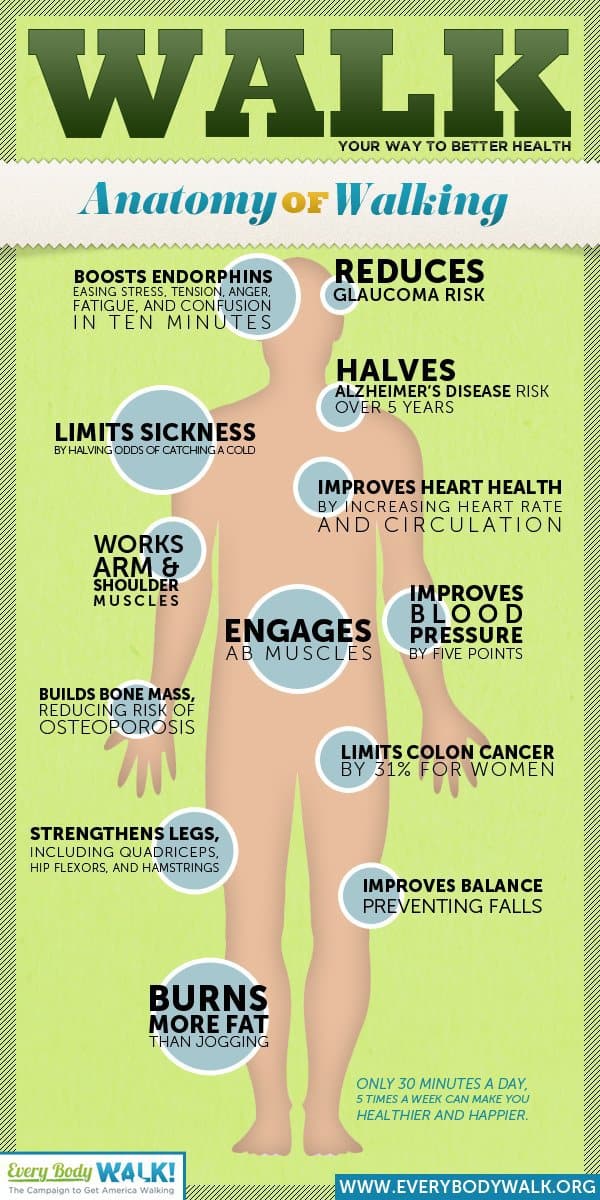








 and
and  .
.




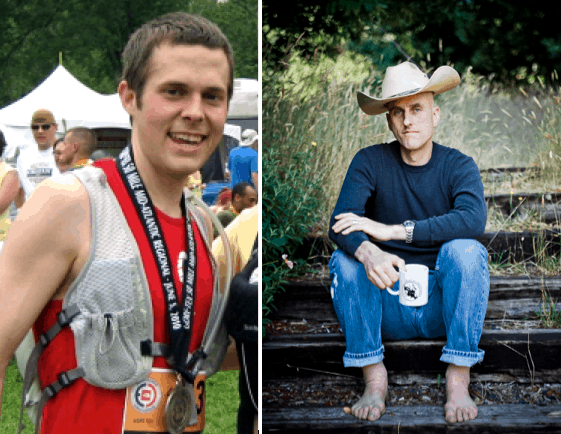

 , to which he inexplicably was able to get Twitter Founder
, to which he inexplicably was able to get Twitter Founder 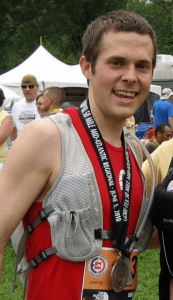
 , even though Matt did not get Biz Stone to write its Forward. That honor, however, was given to the esteemed Ironman stand-out,
, even though Matt did not get Biz Stone to write its Forward. That honor, however, was given to the esteemed Ironman stand-out, 

 (sulphur)
(sulphur) blender that could make a smoothie out of sandstone and water, or it seems.
blender that could make a smoothie out of sandstone and water, or it seems.
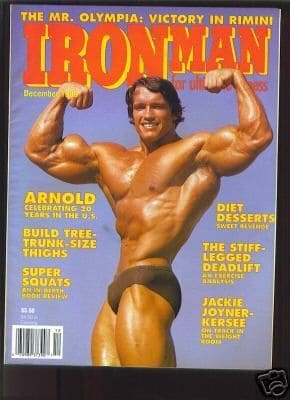
 , and
, and








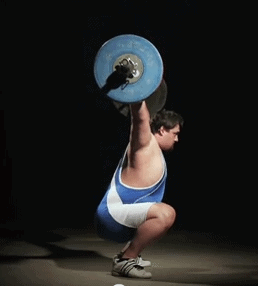

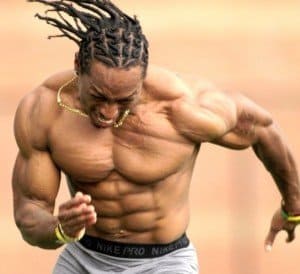
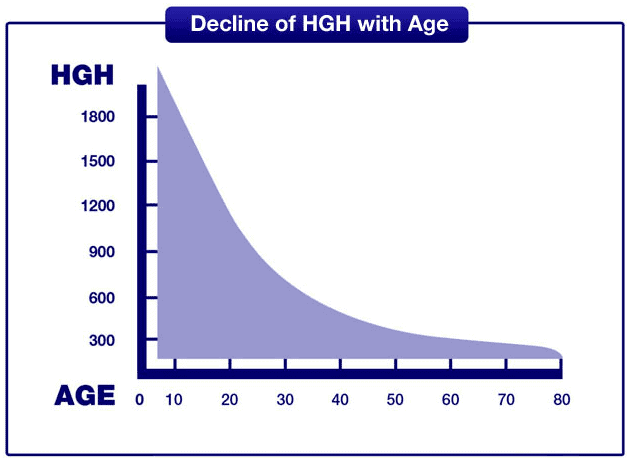

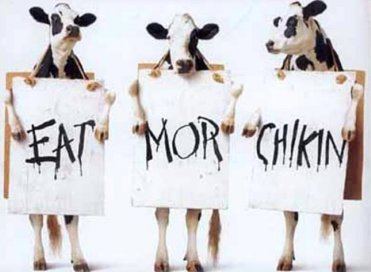

 affirmative results. After being injected with small doses of high-frequency HGH for six months, participants showed measurable improvement in levels of strength, healing, flexibility, energy and vitality. (
affirmative results. After being injected with small doses of high-frequency HGH for six months, participants showed measurable improvement in levels of strength, healing, flexibility, energy and vitality. (

















 , Chris Kresser offers a systematic way to identify foods that are harmful to you.
, Chris Kresser offers a systematic way to identify foods that are harmful to you.



















